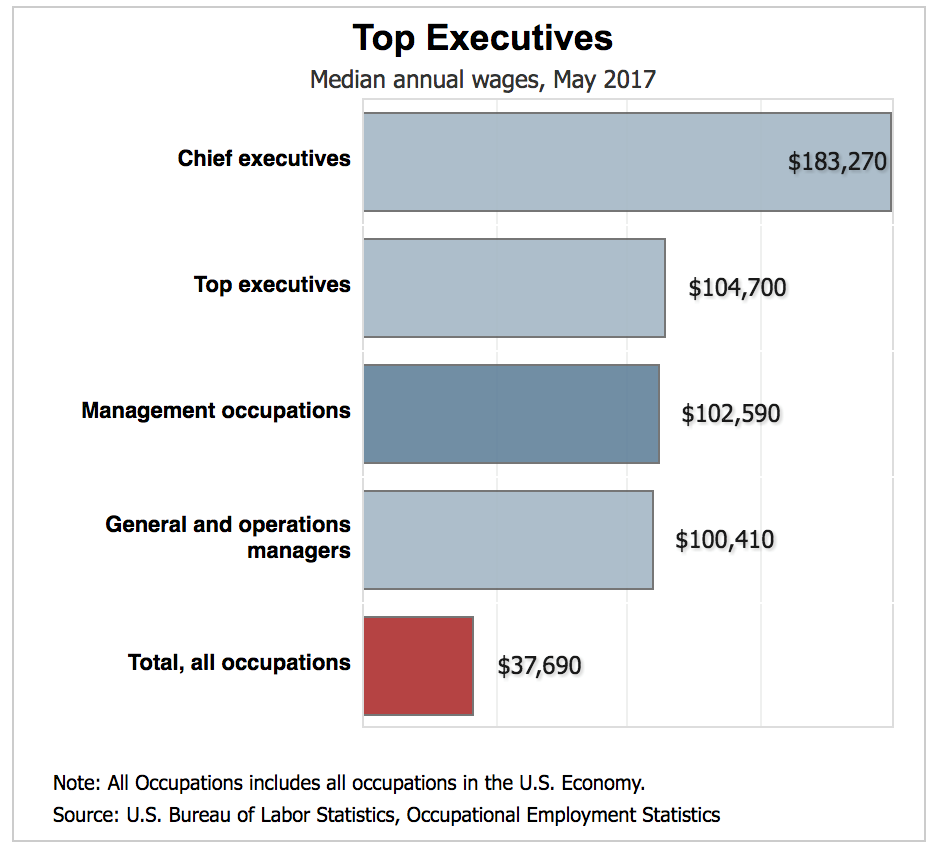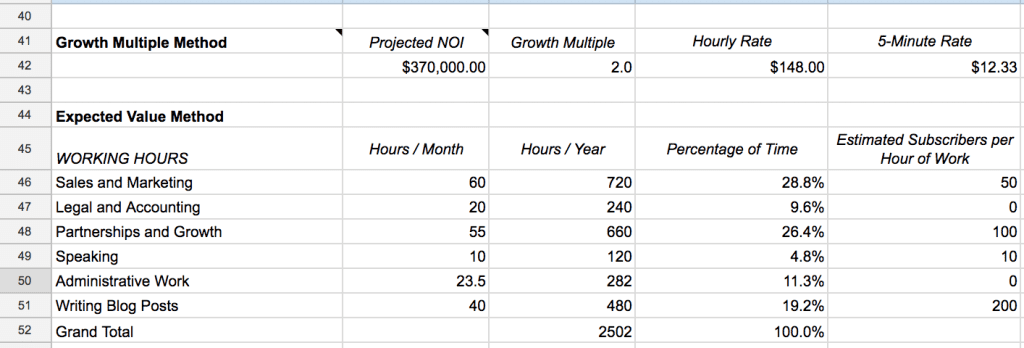Many founders and CEOs choose to take on the work of writing their company’s blogs, but the real cost of content created by executive leadership is surprising. As with every other component of budgeting, it’s important that executives truly count the cost of writing their own blogs. Before the calculations begin, it’s necessary to know what a revenue-generating content creation strategy looks like.
Executives have a wealth of information worth sharing with their audiences. No one is more intimately aware of what their company offers and why it works than the team that founded the company to begin with. You can’t argue with the fact that founders speak most passionately about their products and services.
The question becomes, do knowledge and passion alone translate into revenue-generating blogs? To be pithy, the answer is no. (Sorry, boss!)
Much like being a film enthusiast does not make someone a great movie director, being knowledgeable about the business does not make a founder a successful content creator.
There are many roles and complex intricacies involved in creating not just a blog, but a blog that translates into customers who buy and buy again. And, herein lies the biggest differentiator between the two types of executives who aim to write their own blogs.
Execs That Blog
Some executives will believe they can bang out a solid blog post in an hour to two, spell check it, and post it. The problems with this type of content creation are many, but perhaps most important is that haphazard content doesn’t provide ROI.
Companies that do their blogging the right way will tell you they see a 13x’s increase in ROI. That kind of return isn’t realized from blogs created in a couple of hours. (Oh, how we wish it were that easy!)
Executives who don’t put the same amount of research, strategy, and critical thinking into the customer-facing content are doing their brand and their customers a disservice at best, and wasting their own time as well.
The other type of executive who is considering creating their own blog content is the executive who will put some legitimate effort into their blogs. This executive is willing to learn about SEO tactics and best practices for content creation. So, what does it take for this executive to get blogs done right, and most importantly, what does it ultimately cost?
Creating Blogs That Produce ROI
A blog done well, regardless by whom, requires an investment of significant time. If an executive is considering investing that time, then it must be done properly in order to recover revenue from the time spent on creating it.
As any content marketing professional knows, blogging for the sake of blogging does not convert into revenue. Your blog content must be relevant to the customer persona being targeted, and to the stage of the buyer’s journey they are currently in.
A customer who has just become acquainted with a brand will not find value in a blog written for the customers who are on the verge of buying. Each blog must be written with a specific goal attached to a specific target.
Content that is based on customer personas, buyer’s journey maps, and current research is the only content that will convert. This requires a complex strategic content marketing strategy planned out in advance and analyzed weekly.
Research shows that blogs that convert the most have a number of things in common; length of 1,000 words or more, consistent and regular posting, high quality content with no fluff, originality, and audience-engaged research. It must be meaningful to the right person, at the right time, answer the right questions, and provide a perspective that the competition isn’t providing.
Counting the Steps
Calculating the actual cost of an executive moonlighting as a writer is an important metric to consider. In order to calculate the cost, remember the steps in the process of creating a blog that converts. The steps are; research, writing, editing, posting, sharing, engaging, and measuring results.
If an executive has any hope of writing blogs that have some ROI attached to them, the blogs need to be thoroughly research, expertly edited, posted routinely, shared with an audience through multiple channels, and tracked for engagement and effectiveness.
Next, calculate the time it takes to complete all of these steps for every blog being written. Studies show that experienced writers spend four to six hours writing a 1200-1500 word blog. The first one to two hours are spent on research. Another two to three hours are spent actually writing the first draft, with the final two hours spent on editing, posting, sharing, engaging, and measuring the results.
While most are adept at analyzing the resulting metrics, the average executive isn’t an experienced writer, topic researcher, or editor. If they are going to create converting content, they will most likely need additional time to perfect their blogging skills. As they say, practice makes perfect, right?
Counting the Dollars
Then, to calculate the cost of filling the three roles involved in revenue-generating blogging, a founder should determine the worth of a single hour in their workday. According to the U.S. Bureau of Labor Statistics, in 2017 the average CEO in the U. S. earned $183,270. Broken down by hourly rate, it’s about $87 per hour.

Continuing with this basic math, multiply the average hourly rate of $87 per hour by the seven hours per week it takes to create a blog that converts. From this calculation, it costs an executive $609 per week to write a single blog post if they handle researching, writing, editing, posting, and reporting the metrics.
Perhaps $609 per week doesn’t sound all that bad. But run that calculation out for the whole year—because you must blog at least once every week—and that figure quickly jumps to an annual cost of $31,668. That is about 17% of the average CEO’s annual salary. Consider for a moment what a CEO typically achieves to justify 17% of their income.
Counting the Days
Looking at this cost from a time perspective, we find that creating a weekly blog post that will convert costs the executive-turned-blogger a whopping 364 hours, or 45 and a half eight-hour workdays per year. In these calculations alone, it becomes quite obvious that executives really do have more important and more profitable things to do with the time it takes to blog properly.
That’s not to say blogging isn’t valuable and important. It is, or else executives wouldn’t be considering doing it all. The comparison to be made here is whether it’s the right investment for an executive’s time and salary.
While these figures alone shed a great deal of light on the cost of executives who blog, they are only half the cost. This calculation has not yet addressed the cost of an executive foregoing the other tasks in their usual purview for six or seven hours per week, every week of the year.
Counting the Cost
It’s important to remember that every “yes” has within it an inherent “no”. That means that saying yes to writing a blog means saying no to working on things like product development or sales enablement.
In order to calculate the full cost of an executive writing their own blog, we must determine the revenue-generating tasks being ignored while the executive is researching, writing, editing, posting, engaging, and analyzing blog metrics. Probably the most detailed calculator available to do this is James Clear’s Time-Value Spreadsheet.

Now, here’s where the complex math comes in, but bear with it because it’s how we find the real cost of execs that blog. For the sake of this article and simplicity, let’s assume that the time spent writing a blog is traded with time spent on the executive’s strategy meetings with their leadership team. The average CEO reports spending about two and a half hours per day in meetings with their leadership team. If we trade those hours for blogging, then the executive now spends a little over one hour per day in the strategy development meetings.
Assume that those strategy meetings are directly responsible for only 10% of the company’s YoY growth of $400k. To say yes to writing a blog seven hours per week, the executive must reduce strategy meeting time by 44%.
If the strategy meetings are responsible for 10% of that YoY growth, and those meetings are reduced by 44% to make time for blogging, then blogging would cost $17,600 in YoY revenue. Add that to the hourly rate of pay mentioned earlier and an executive writing their own blog is now costing a painful $49,268 per year.
Perhaps some executives will simply write blogs on weekends or evenings. In this scenario, the executive would need to calculate the lifetime value of their weekends and the things they’d be giving up if they spent six or seven hours of 52 weekends per year on blogging.
Obviously the math involved in calculating concrete figures is far more complex than what is detailed above. Nonetheless, it does serve to show that an executive’s time is far more valuable than just the hourly breakdown of their salary.
From strategy to leadership to product development, an executive’s time needs to remain focused on a calendar of tasks that scales the company to biggest possible success in the shortest amount of time for the lowest possible cost. Does writing a blog align with that list of goals?
Once you’ve completed your calculations, tweet us at @AudienceOps and let us know what it would cost you to write your blog and what other tasks you’ve decided to say “yes” to instead.